Article Post
Slipping Through the Cracks: Building Envelope Failures
June 20, 2022
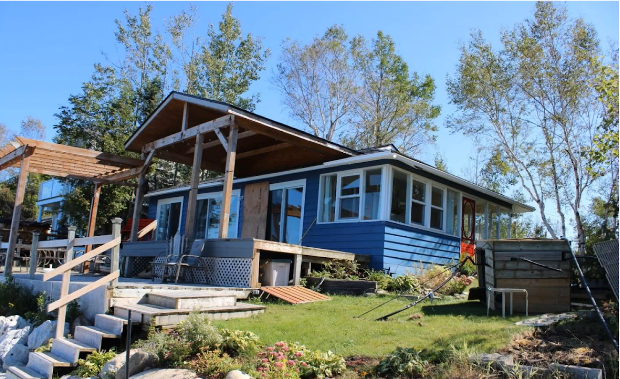
Building envelopes play a critical role in protecting a building from moisture, elements, pests, and pathogens. Although relatively common, claims involving building envelope failures are often complex. Building envelope failures can go undetected for years, often resulting in a slow but serious deterioration of the property.
Function and components of the building envelope
Function and importance

Figure 1: An illustration of the importance of building envelopes.
The building envelope is the outermost layer of the building. It protects the structure from the elements, regulates the indoor temperature, and regulates air movement in and out of the building. A building envelope protects the building and its occupants from harmful substances, toxins, pathogens, and pests.
Because this is part of the external appearance of a building, it also serves an aesthetic function. Sometimes, a building envelope has a heritage value to certain communities and must be preserved. A claim can be especially complex if it’s a historic building.
Components of a building envelope
- The walls, roof, and insulation – These components regulate the temperature and control the temperature movement.
- Water and damp proofing – This part of the building envelope is located around the foundation to protect the building from the ingress of groundwater and moisture.
- Moisture and vapour barriers – Located in the walls to prevent moisture penetration.
- Exterior finishes – Examples of exterior finishes include roofing materials and shingles.
- The siding – This can be brick veneer, stucco, or vinyl siding.
- Windows and doors – These components play a major part in energy preservation. However, they can also initiate the failure of a building envelope.
- Soil gas control systems – Prevent harmful soil gases from entering the living space.
Types of building envelope failure
The main functions of a building envelope are to protect the building from moisture effects and regulate air leakage and thermal movement. These failures are categorized as moisture-related, air leakage, and thermal movement-related failures.
1. Moisture-related failures
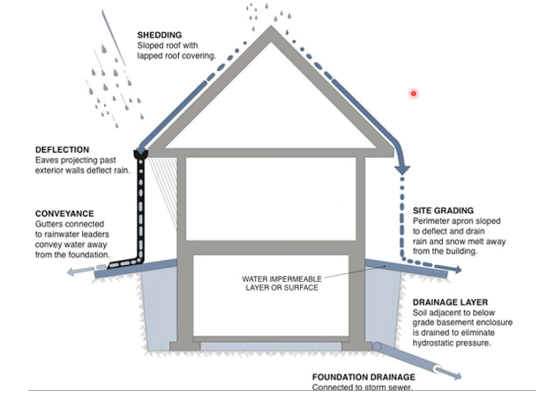
Figure 2: An example of a properly functioning building envelope.
When it starts raining, shedding action by the roof protects the building interior from the rain. The slope of the roof does part of that. Overlapping between the layers of roofing material then creates a watertight surface that prevents moisture from entering the attic space.
The siding is protected by eave projections past exterior walls to deflect rain. In addition, drainage from the rain gutters conveys the rainwater to the grade and then to the storm management system. According to the code, the site must be graded.
If the soil absorbs water, it can be collected and drained away from the building to eliminate hydrostatic pressure. There is also damp proofing and waterproofing around the foundation, which prevents water entry. Any failure in moisture protection can lead to water accumulation and subsequent entry into the living space.
2. Air leakage failures

Figure 3: An illustration of air circulation in a building.
This type of failure usually occurs through unsealed joints and penetrations around the windows, chimney, or different layers of the building. The failure, deterioration, or lack of sealants leads to the free movement of air. This causes higher energy consumption and the ingress of toxins.
When a car garage is attached to the house, nonexistent or deteriorated sealants can lead to the ingress of car fumes. Toxins and car fumes getting into the living space can cause sickness in the occupants.
3. Thermal movement failures.
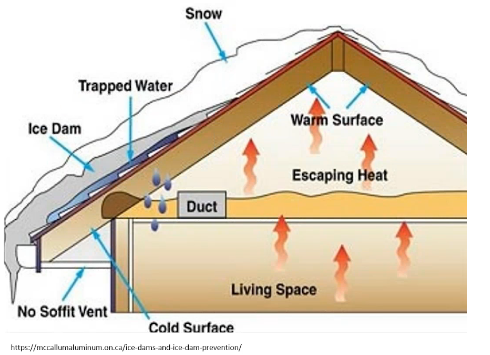
Figure 4: An example of a properly functioning attic space.
This failure is mainly attributed to lack of- or insufficient insulation. During winter, there is a conditioned living space that is heated. If the insulation is insufficient, deficient, or lacking, the unconditioned space will be brought to equilibrium with the conditioned space.
Once this occurs, the attic space becomes warmer, creating a warm surface on most of the roof. When it snows, the innermost layer in contact with the roofing begins to melt. As a result, the water moves in the slope towards the cooler regions closer to the eave. The water then starts freezing, and an ice dam is created.
This traps moisture at these locations. Water can penetrate underneath the shingles and through cracks or other deficiencies as it accumulates. Then, it would move into the living and attic spaces.
The attic space is usually dark and warm. When the warmth and darkness combine with moisture and wood, the space will have biological growth. Microorganisms start flourishing in this environment and cause an unhealthy environment for occupants and deterioration of the property.
Sources of building envelope failure
The sources of the building envelope failure can start at any stage of the building lifecycle. Failure can start at the design or construction stages or during the service life.
1. At the design stage
Incorrect detailing can lead to failure. Examples of this include specifying insulation with an inaccurate R-value or specifying an incorrect roofing material for a type of slope. We can also see missing sealant instructions in the drawings. These errors would result in a failure initiation zone in the building envelope if undetected before construction. Over time, this starts the failure cycle of the building.
2. At the construction stage
There are two main factors at this stage – low-quality products and poor workmanship. The use of poor-quality products could be intentional. Other times, a contractor might use a material that is not as specified in the design or up to the standards. This material will not perform as intended, and the building envelope will not perform as designed. The least it will do is shorten the lifecycle of the building envelope, and the worst is to initiate a failure.
3. At service life
The action of natural forces, such as hail, can cause failure. Hail can damage roof shingles, windows, and siding. This creates a location where moisture and temperature move freely in and out of the building.
Extreme wind and soil movements can also result in the breaking of sealants and separation between the different components of a building envelope. If this separation becomes permanent, the gap allows moisture and air to move in and out freely. The impact can have the same effect, creating holes and gaps within the building envelope.
Failure in service life can also be due to a lack of maintenance. There should be periodic maintenance for all building types. Periodic maintenance can prevent or enable early detection of areas where the building envelope is being deteriorated. Without maintenance, the life expectancy of the building or materials is exhausted. This results in complications.
These sources of failure can occur individually or concurrently. For example, the usage of low-quality products and a natural force such as extreme wind can combine to cause failure.
Damages associated with building envelope failure
Damage to the building envelope occurs in two main categories – direct and indirect damages. Direct damages are due to a failure in a part of the building envelope. A direct failure can be detected in the early stages. Explicit failure to deliver a function is another form of direct damage.
In contrast, indirect damage is a slow deterioration that takes place over time. Therefore, it cannot be detected in the early stages. Sometimes, it’s only detected when it’s too late. These types of failures can damage the structure and other building components. These are typically components the building envelope was supposed to protect in the first place.
The second type of indirect damage is the creation of an unhealthy environment. Microbes start releasing toxins into the air when moisture accumulates, resulting in biological growth. This creates an unhealthy environment and can harm the occupants.
Example: Direct damage
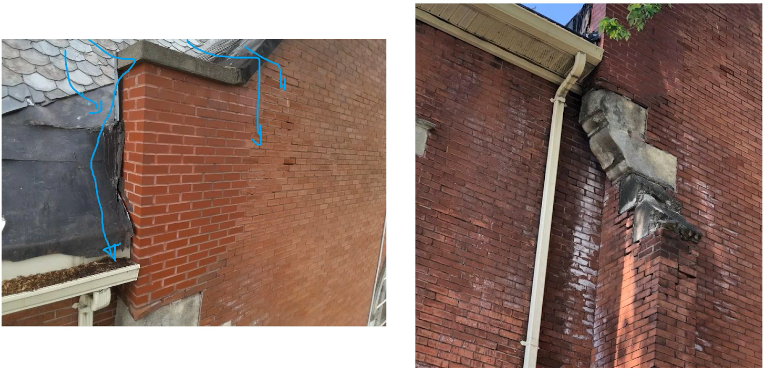
Figure 5: Direct damage to an old building.
The building in figure 5 is almost 120 years old. At a certain stage, part of the building was restored. However, they built a shorter parapet at the location shown on the left-hand side image. The short parapet resulted in water overflow and damaged sealants.
Another failure is the accumulation of tree leaves and branches that block the rain gutter. Instead of directly going into the rain gutter, water would overflow into the brick veneer. All these are failures to the building envelope.
When the brick veneer absorbed water, moisture got absorbed on rainy days or when the snow melted. This moisture would start dissolving the salts and minerals within the brick veneer. When water starts evaporating from the brick veneer on a warmer day, it washes out all the salts and minerals that are an important part of the structure of the brick veneer units.
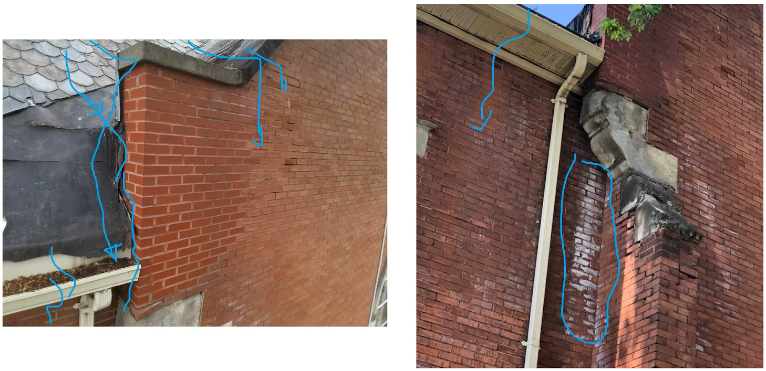
Figure 6: Spalling (left) and salt formation (right) observed in the building.
The salt formations shown in figure 6 are a major sign of moisture movement through the bricks. With time, this washes out the chemical components of the bricks. As a result, the bricks start reducing in size. Deterioration begins within the mortar, and the bricks would start falling off. The same thing happens to concrete corbels.
Some cracks and spalling can be observed in figure 6. With time, this part would fall, directly damaging other parts of the building envelope. It’s important to note that this is a heritage building. This means the newer material used in the restoration is incompatible with the old material. The material incompatibility will create cracks and stress the old material, which is usually weaker.
When dealing with historic buildings, it is important to work with a heritage specialist or historic restoration contractor.
Example: Indirect damage
A house with a concrete balcony sustained indirect damage. Because of the cladding and soffit on the structure, we could not see the balcony.

Figure 7: The balcony after stripping out the cladding.
The claim was unrelated to the balcony, but we had to strip the cladding out for further investigation. This allowed us to see water seeping through voids between the slab and cladding. It then started accumulating within the concealed space.

Figure 8: The decaying wood joists.
Wood joists supported the concrete slab of the balcony. Therefore, water accumulating in this confined space and atmosphere caused severe decay of major structural support for the balcony.
Case study 1: The leaking sunroom
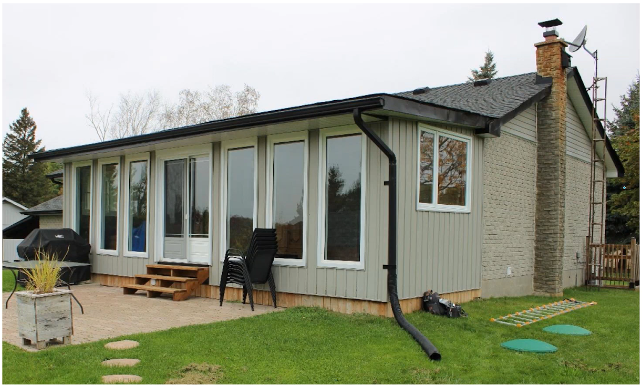
Figure 9: The house that sustained damage.
The owners decided to add a sunroom to their house on the farmland. When adding the sunroom, they also rerouted the house to extend its life span and that of the roof. The claim came to us as leakage at the interface between the sunroom and the main house. Upon our first examination of the scene, our investigator realized that the roof slope marked below was shallow.
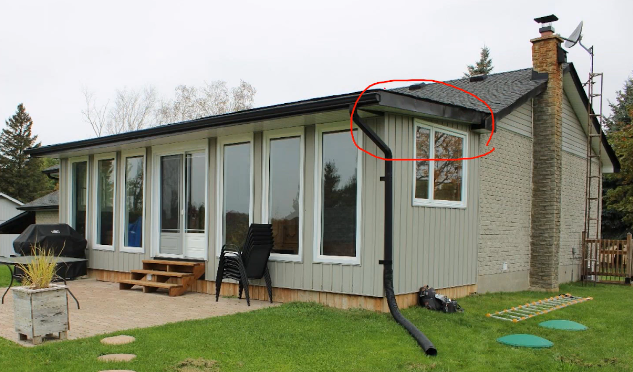
Figure 10: The shallow part of the roof slope, shown in a red circle.
The roofing material (shingles) was not code-compliant for such shallow roofs. In addition, the chimney flashing was improperly done.
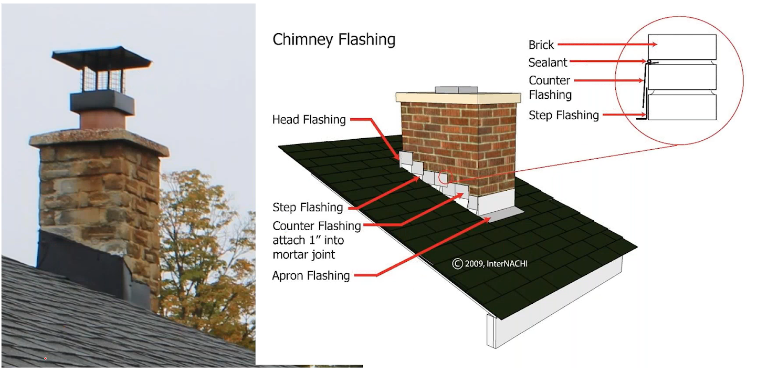
Figure 11: The chimney flashing at the house (left) and an example of appropriate flashing (right).
On the right-hand side (figure 11), step flashing goes from underneath the shingles and adjacent to the chimney at a distance specified by the code. There is also counter flashing, which overlaps the step flashing. This counter flashing has to penetrate at a certain depth into the mortar joints. A sealant is then applied to create a watertight surface. When it rains, the water goes with the natural slope and gets drained away from the building.
In this case, the contractor only wrapped the flashing around the chimney and ignored any counter flashing. He only put in a couple of screws and then some sealant.
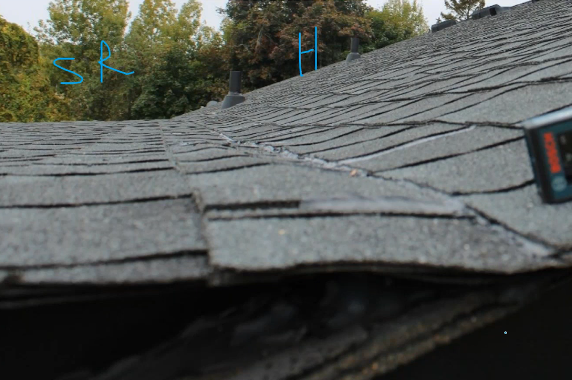
Figure 12: The shallow roof slope.
Further inspection of the sunroom roof revealed that the roofer did not remove the old roofing, which is not appropriate. The second issue was the shallow slope and using shingles. Because of the material buildup, the roof was uneven, especially at the interface. This means water could go underneath the shingles and into the sunroom when it rained.
In a trial to remedy the situation, the restoration contractor temporarily applied sealant so that water could not get into the sunroom space.
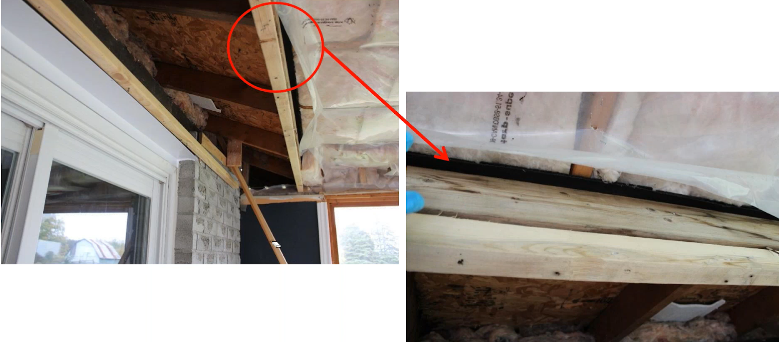
Figure 13: A closeup of the improper framing.
After removing the finishes in the sunrooms, we discovered that the old shingles were still there. The contractor just applied the new roof on top of the old shingles. The new joists for the sunroom were supported on top of either the sheathing or the fascia board, which is improper proctice. In addition, the roof framing needed to have been done correctly.

Figure 14: The areas marked in blue indicate where the reported leakage was at its highest.
The types of failures observed here were failure to drain, shed, and deflect the rainwater away from the building. The sources of the failure were poor workmanship and improper detailing. Using shingles on a shallow roof indicates improper detailing, which is a non-code compliance practice.
The resulting damage is direct, as it expressed itself as water leakage into the sunroom. That was an explicit failure to deliver the intended function.
Case study 2: Potential wind damage claim

Figure 15: A lakefront cottage that experienced failure.
The assignment came to us as a wind damage claim. One week before our scene examination, the area had a severe windstorm. During the windstorm, the exterior wall was pushed several inches inwards. There were a few damages, and components were dislocated. This is common with claims related to wind.
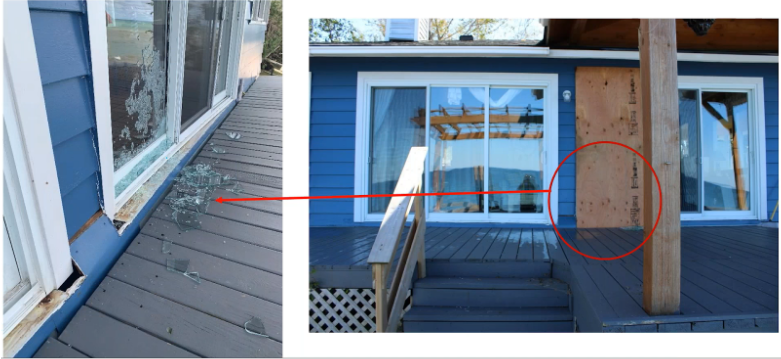
Figure 16: A closeup of the exterior wall.
A closer look at the exterior wall revealed a dislocation of the wall by a couple of inches, especially where there is structural support. We also noticed shattered glass, and everything appeared as structural damage due to severe wind. The finishes inside the building were in place. We then removed them to inspect the framing and sill plates.
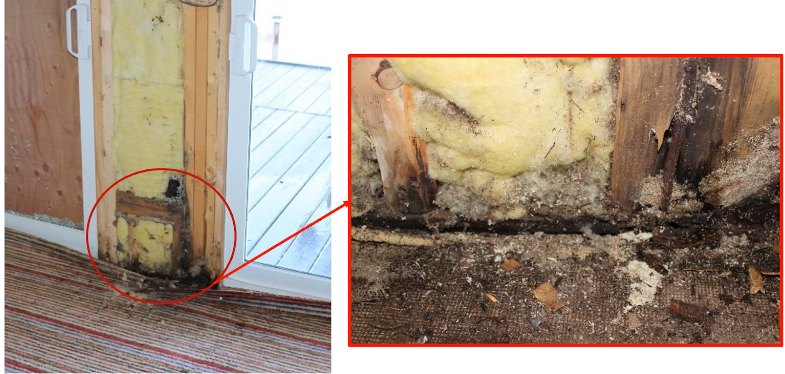
Figure 17: The deteriorating structural members.
The structural members were slowly deteriorating. We discovered that water was seeping through the location circled red (figure 17). The water was accumulating around the sill plate and the bearing parts of the stock post.
It is important to note that a beam was on top of the stock post. The beam spans through the openings and another beam from the other side. These beams were carrying the roof structure. Because the water was seeping through a concealed and dark space with wood material, there was plenty of food for microorganisms. As such, wood decay took place over time. The decay went undetected for years. And once the wind hit the wall, it found almost no resistance.
The main reason for the decay was a lack of maintenance. There needed to be proper sealants around the windows. Additionally, cleaning the sliding doors would block the weep holes and prevent adequate drainage of water. As such, it would accumulate in the stock post location.
The type of failure, in this case, was a failure to drain and dry the rainwater away from the building. The source of failure was mainly a lack of maintenance. However, poor workmanship was spotted at other locations.
The resulting damage was indirect damage to the structural components over time, weakening the structure. Another major type of damage was biological growth, which created an unhealthy environment in the living space. If inhaled by humans or pets, the harmful substances released by these microorganisms can have damaging health effects.
Key takeaways
- Building envelopes offer protection from the effects of the elements and harmful substances.
- Failure of the building envelope is often attributed to improper detailing, poor workmanship, inferior or low-quality products, natural forces, and lack of maintenance.
- Failure can go undetected for years, resulting in a slow deterioration of the property.
- Sometimes the reported failure might be different from the actual cause of the damage. Often, the hidden inability of the building envelope is a major contributing factor to the loss.